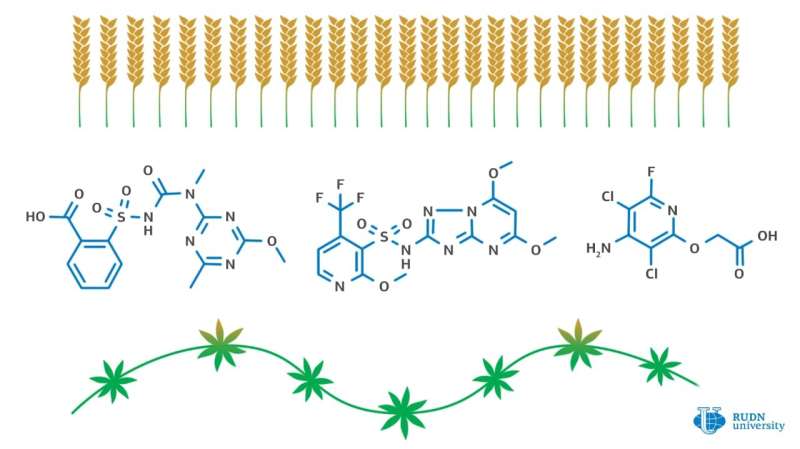Scientists develop a way to increase winter wheat yield by 46-60%

Agricultural chemists from RUDN University have developed a new way to deal with cleavers, a weed that is the main enemy of winter wheat crops. They found a combination of herbicides that, as the experiments have shown, increases the yield of winter wheat by 46-60 percent. The results are published in Archives of Agronomy and Soil Science.
Cleavers (Galium aparine L.) is a weed plant that impedes the growth of winter wheat (Triticum aestivum L.) and significantly reduces the yield. The weed is one of the most widespread, infesting winter crops in Eurasia and North America. It adapts well to the environment, has high frost resistance and great genetic diversity. In addition, cleavers is resistant to many common herbicides, and those that are effective can damage cultivated crops and adversely affect the yield.
Meisam Zargar, an associate professor at the RUDN University Agrobiotechnology Department and his colleagues from Russia and Iran, were able to develop a mixture of herbicides that effectively fights cleavers and increases wheat yield approximately by half.
To find the optimal combination of herbicides, the researchers decided to use post-emergence herbicides: substances that destroy weeds after the cultivated plant is at the tillering stage and has already grown several leaves. Typically, such agents are used selectively, because they may act differently on a plant depending the class of flowering plants the latter belongs to, i.e. monocotyledonous and dicotyledonous. For example, they may destroy all dicotyledonous plants in monocotyledonous crops, or vice versa.
Professor Zargar conducted experiments in two fields sown with either Krasnodar 99 wheat or with Gerda wheat. Cleavers was the dominant weed meanwhile other species of weed were present in small amounts. The experimental fields were divided into plots, in each of which either one of the seven studied types of herbicides only were applied, or one of these types of herbicides in combination with tribenuron, a chemical for controlling annual dicotyledonous weeds. In total, RUDN University agricultural chemists studied seven types of chemicals: flucarbazone, metsulfuron, 2,4-D, fluroxypyr, tribenuron, pyroxsulam, and sulfosulfuron. They introduced herbicides when wheat was at the tillering stage, i.e. when above-ground side shoots were being produced, and the ears of the plant were 4–10 cm tall with 4–6 leaves. After that, the scientists let the wheat grow in the usual way, and 1-3 weeks after the use of herbicides, maturity and density of weeds in each plot were evaluated as well as their dry weight.
After two and four weeks passed since the start of the experiment, the researchers evaluated the safety of the herbicide for winter wheat on a scale from 0 percent to 100 percent, where 0 percent is the lack of visual effect, and 100 percent is the death of plants. The agricultural chemists also compared the crop obtained in the experimental fields with the crop harvested in a control plot that was not treated with herbicides.
The lowest grain yield was observed in plots treated with sulfosulfuron. Two combinations turned out to be the most effective and safe for the plants: of the herbicides tribenuron and fluroxypyr, utilised in the plots seeded with "Krasnodar 99" wheat, and of tribenuron and pyroxsulam, used in the plots seeded with the "Gerda" cultivar; the yield increased by 60 percent and by 45.7 percent, respectively, compared with the control plot. These combinations of herbicides have not shown any significant traumatizing effect on winter wheat: less than 10 percent.
The results will help increase the yield of winter wheat and thereby reduce the cost of its production in agriculture.
More information: Meisam Zargar et al. POST herbicide programs utilizing tribenuron for cleavers (Galium aparine L.) control in winter wheat cultivars, Archives of Agronomy and Soil Science (2019). DOI: 10.1080/03650340.2019.1661995
Provided by RUDN University
















